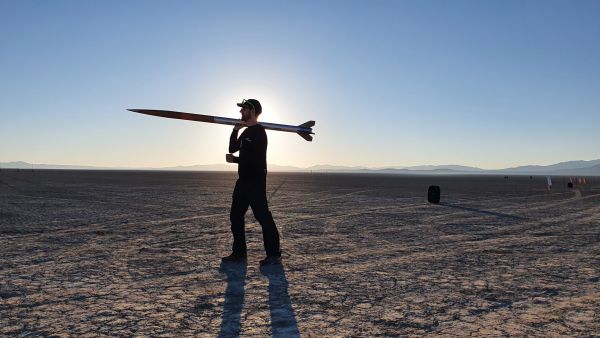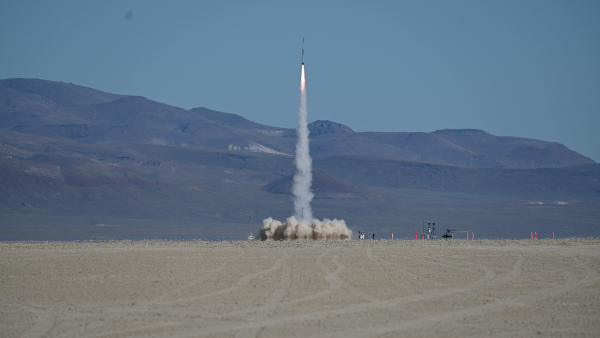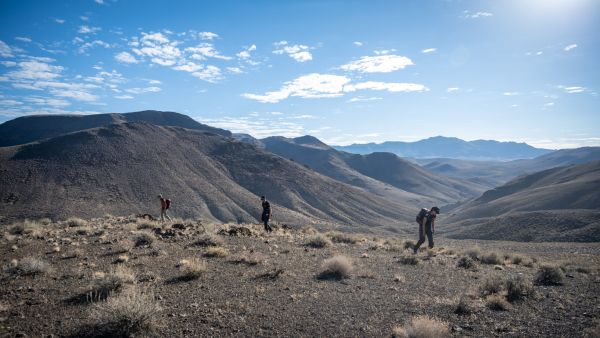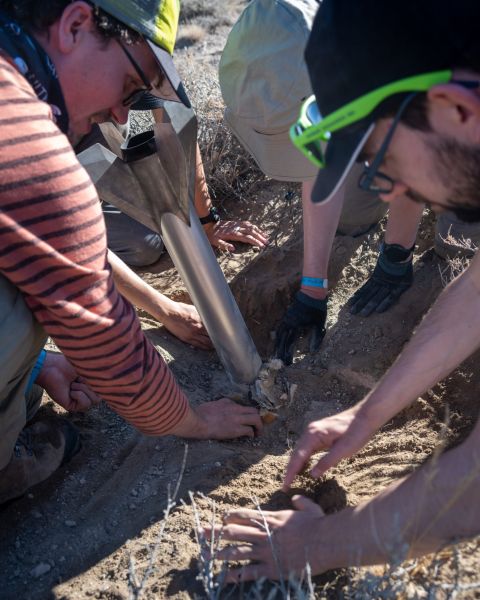Final Report The Hound 2022
After the unsuccessful launches in 2018 and 2019 the coronavirus made us wait till September 2022 for our third attempt to break the altitude record for European student teams. We prepared two different rockets for the launch event Balls XXX. Both use the same concept and almost identical airframe but they differ in the motor configuration:
- "The Hound Minor": Cesaroni M1545 over N4100
- "The Hound Major": Cesaroni M2245 over N5800
Major was simulated to reach an altitude of 90–120 km. Due to its high velocity (> Mach 5) and acceleration (> 40 g) it will be under great aerodynamic and mechanical stress. Minor on the other hand is only estimated to reach an altitude of approx. 55 km. This is enough to break the European record but puts less stress on the rocket increasing the chance of a successful flight.
Logistics and Preparations
As in the previous years we chose to do our preparations in Reno/NV. All our hardware left Austria already a month before, but there were many delays with the shipping because of, e.g., the customs office. The delivery did, however, arrive soon enough so that we could put our preparation time to good use: unpacking, last pre-flight checks, preparing pyrotechnics, organizing food for the desert, and much more was done.
Black Rock Desert: BALLS XXX
The rocketry event BALLS XXX (held for the 30th time) is organized by a local group of the Tripoli Rocketry Association. Every year it takes place in the Black Rock Desert in Nevada. Its remote, flat, and usually easily accessible terrain makes it ideal for such an event.
On the first day we set up our camp and our autonomous ground stations, assembled the launch tower, and tested our internet connection with Starlink. The latter enabled us to stream the launch of The Hound Minor live the next morning.
The Hound Minor
On Friday the 23rd of September the final phase of "The Hound Minor" began.
At about noon the rocket was in the tower, ready to launch. Lift-off was nominal and also the upper stage motor ignited after 16 s – just as planned. For the first time a TU Wien Space Team rocket was accelerated to beyond Mach 4. Unfortunately, it turned out that at such high speeds the rocket was not aerodynamically stable enough. Instead of coasting to an altitude of more than 50 km, the upper stage only reached 10.2 km AGL.
The lower stage landed nominally on its parachute and was quickly recovered. Due to the unintended acrobatic flight maneuvers at max. velocity the upper stage broke into three parts which all landed without a parachute. Fortunately we had radio contact till the rocket hit the ground, so we also found those pieces quickly.
Conclusion for The Hound Minor:
- The launch procedure worked well, the team is well attuned.
- The upper stage motor ignited successfully.
- The team's speed record was increased to about Mach 4.
- The aerodynamic dimensioning of the upper stage at those velocities was inadequate.
- The telemetry and avionics worked flawlessly.
The Hound Major
The Hound Major was already aerodynamically optimized upfront because this configuration with the max. amount of propellant should reach even high velocities.
After various delays and a bit of problem-solving on Saturday, the launch procedure for The Hound Major was executed without any incidents and the rocket took off nominally on Sunday the 25th of September.
Unfortunately, the upper stage experienced similar issues as two days before: shortly after a successful motor ignition it got unstable. Nevertheless, it reached an altitude of 21.4 km MSL, setting a new record for the team. The goal of reaching space, however, could not be achieved.
Since the lower stage again landed nominally on the parachute, it was recovered just as quickly. The upper stage on the other hand landed ballistically, i.e., without a parachute and the exact landing coordinates were unknown. Based on the coordinates last received via radio, possible landing points were estimated and on the second day the search party found it. The search party was not able to locate the rocket at the first attempt. After some late-night recalculations of the landing estimations, the search party found the rocket the next day, only 100 m nearby one of the calculated landing positions.
Unfortunately, the impact with approx. 280 m/s completely wrecked the avionics and neither flight data nor videos could be recovered.
Conclusion for The Hound Major:
- Nominal lift-off and another successful ignition of an upper stage motor
- Again, the aerodynamic dimensioning of the upper stage was inadequate. Up until the two launches at BALLS this year we could never verify our design at speeds > Mach 3. Now we know that at these velocities the simulation programs estimate the stability with too low accuracy.
- The team's altitude record was increased to 21.4 km
- The telemetry and avionics worked flawlessly.
Conclusions and Outlook
Even though we did not achieve our goals – the European altitude record as well as reaching space – this year's launch campaign was a big success.
The positive feedback of the organizer regarding our professionalism underlines that we are on the right track. The media echo, numerous positive messages from all over the world and promised support for the near future motivate all participants for another try.
We thank all our partners, sponsors and supporters and hope for a successful collaboration also at the next attempt.





